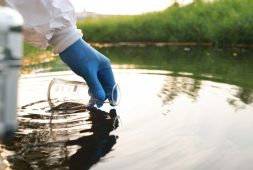
Plastics break down into microplastics, particles thousands of times smaller than a grain of rice. These tiny bits are absorbed into our arteries, blood, and organs, posing potential harms. Keep reading to discover more about these risks and how to minimize exposure.
Key notes you need to be aware of:
- Sources of Microplastics: Microplastics are ubiquitous in our environment, originating from various sources such as food and drink containers, synthetic textiles, furniture, and personal care products. These tiny plastic particles, often invisible to the naked eye, find their way into the air, water, and soil through a myriad of human activities and industrial processes.
- Health Implications: Recent research has unveiled concerning connections between microplastics and adverse health effects, particularly in the cardiovascular system. Studies have shown that microplastics can accumulate in arteries, potentially leading to arterial blockages and inflammation. Such conditions significantly elevate the risk of heart attacks and strokes. The microscopic size of these plastic particles allows them to bypass natural filtration systems in the body and penetrate deep into tissues, where they can trigger inflammatory responses and disrupt cellular functions.
- Reducing Exposure: While complete avoidance of microplastics might be challenging due to their pervasive presence, there are practical steps individuals can take to limit exposure. Opting for glass bottles instead of plastic containers for storing food and beverages can significantly reduce the intake of microplastics. Similarly, choosing natural fibers like cotton or wool over synthetic materials when selecting clothing and furnishings can minimize the shedding of microplastic fibers into the environment. Additionally, being mindful of personal care products and opting for those without microbeads or synthetic polymers can also contribute to reducing overall exposure.
Microplastics appear to be ubiquitous nowadays. These minuscule plastic particles can be found in the air we breathe, the food we consume, and the water we drink. They have even been discovered in our bodies, as recent studies have identified microplastics in our arteries.
“The rate of increase in microplastics in the environment is exponential and we have every reason to believe that the concentrations in our bodies will continue to increase in the coming years and decades,” Matthew Campen, PhD, said. He is a professor at the University of New Mexico College of Pharmacy in Albuquerque. He has done extensive research on microplastics.
While there’s a growing proof that connects microplastics to a wide range of health problems, there’s has yet to be a sustainable amount of definitive proof that these particles are the culprit for specific medical issues, Dr. Campen added. “What scientists worry about is several trends in disease prevalence that have been unexplained — Alzheimer’s disease and dementia, colorectal cancer in people under 50, inflammatory bowel disease, and global reductions in sperm count,” Campen said, taking note of the fact that there are only a few health problems that have been linked to microplastics in the most recent years.
Campen states that the most compelling evidence to date regarding the potential threat of microplastics to human health has been published in The New England Journal of Medicine (NEJM). Researchers discovered microplastics and even smaller nanoplastics inside arteries, which were associated with a more than quadrupled risk of events such as heart attacks, strokes, and premature death.
Even though the study wasn’t able to provide proof that microplastics directly bring about heart problems, “The recent report in NEJM raises serious alarms,” Campen said.
Keep reading to learn how concerned you should be — and what actions you can take.
Microplastics – What These Are and Where They Come From
Microplastics and nanoplastics are incredibly minuscule, making them virtually undetectable in your everyday activities. Microplastics are smaller than 5 micrometers, which is thousands of times smaller than a grain of rice, while nanoplastics are even tinier, below 1 micrometer.
Despite their size, these particles can be found in various unexpected places. Martha Gulati, MD, director of preventive cardiology at the Smidt Heart Institute at Cedars-Sinai in Los Angeles, explains that while it’s understandable to find them in water bottles and plastic containers, they’re also present in less obvious sources such as makeup, personal care products, clothing, textiles, and even many foods and beverages.
“There is an enormous amount of degraded plastic pollution contaminating our planet Earth and we are inhaling and ingesting microplastics and nanoplastics every day and everywhere,” Dr. Gulati said. “They have been found even in remote areas like the Antarctic and Arctic, Mount Everest, and the ocean floor.”
Microplastics, due to their size and widespread presence, are easily inhaled or ingested by people, and can accumulate over time.
Health Issues Connected to Microplastics
Gulati explains that in laboratory experiments, microplastics have been shown to clearly damage human cells. However, what remains uncertain is whether they directly contribute to specific health issues.
“The problem with the study of the specific toxicity of microplastics is that they are composed of different chemicals, many with different potential health effects,” Luz Claudio, PhD, a professor of environmental medicine and public health at the Icahn School of Medicine at Mount Sinai in New York City, stated.
One of the main health issues about microplastics is their potential to be what experts call endocrine disruptors, which are chemicals that disrupt the normal functioning of the hormone system of the body, Dr. Claudio said. “Many well-documented studies on laboratory animals point in this direction,” Claudio added.
As our exposure to microplastics will be on the rise, and these tiny particles are also accumulating in our systems, scientists are worried about the health repercussions they may have, Claudio said. “No one really knows the answer to this, but this lack of conclusive knowledge does not mean that the effects are not important,” Claudio also said.
How to Avoid Microplastics or Get Rid of Them
While the precise health risks remain uncertain, there are definitely no advantages to the accumulation of microplastics in the body over time. Jessica Goddard, PhD, chief science officer at Tap Score and SimpleLab, a water testing startup in Berkeley, California, suggests that even if you can’t completely avoid exposure, there are measures you can take to limit it.
“We can absolutely limit our exposure to microplastics and we can reduce our contribution to the broader microplastics pollution problem,” Dr. Goddard said.
You can reduce your exposure to microplastics in drinking water by installing a home filtration system for tap water and by refraining from using disposable plastic bottles.
To minimize the inhalation of microplastics, take measures to reduce indoor air pollution, which often includes particles shed by carpets and furniture made from plastic fibers.
“We’re surrounded by plastic products, so I try to think about what purchases will give me the highest impact for the greatest risk reduction,” Goddard said. “This may be different for everyone. The highest impact being things I’ll use over and over again, and mitigating the greatest risk means thinking about the route of exposure and the susceptibility and vulnerability of the exposed.”
In Goddard’s case, she opts to use glass bottles instead of plastic for her infant. “Babies are particularly vulnerable and so are usually at greater risk from exposures,” Goddard explained. “Baby bottles are used over and over and heated regularly, so making the plastic-alternative choice has a great impact.”
The options could vary for someone else or another family. It might involve searching for clothing and home textiles crafted from natural fibers for some, while for others, it could mean getting rid of plastic food containers.
Doing your own part can be crucial because removing microplastics from your body once absorbed is next to impossible. “You cannot detox,” Goddard said.



